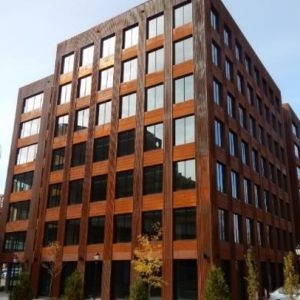
The recent adoption of mass timber building types in the International Building Code has opened up options for designers to use the material in a range of structures. Mass timber has tremendous potential to reduce carbon emissions and sequester carbon, as well as provide a better living environment for its occupants. The U.S. Forest Service has invested over $40M in grants in support of mass timber construction, manufacture, research and education since 2015. The Forest Service continues to identify new investment opportunities to grow wood product markets. The use of mass timber as a “green” solution for low cost, affordable housing has become an important focus for our Wood Innovations Program. Prominent mass timber projects including the Heartwood in Seattle and a small, urban affordable housing development in Boston will be discussed. Join AWC for this 90-minute program with special guests Susan Jones, FAIA, of atelierjones, Kevin Naranjo from the US Forest Service, and Tom Chung, FAIA, LEED AP BD+C with Leers Weinzapfel Associates to discuss Mass Timber in Housing: Aesthetics, Affordability, and Sustainability.
Funding provided in part by the Softwood Lumber Board.